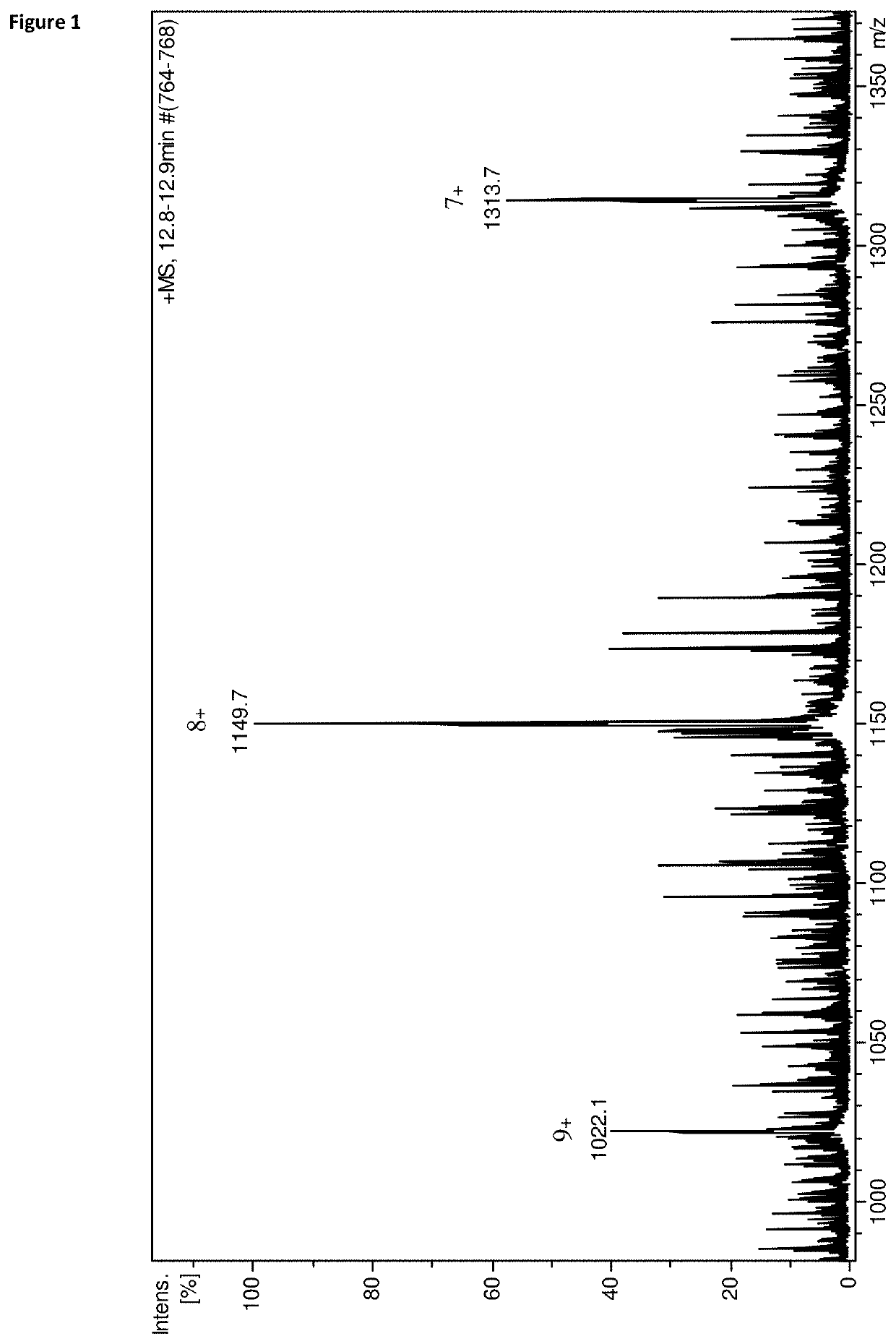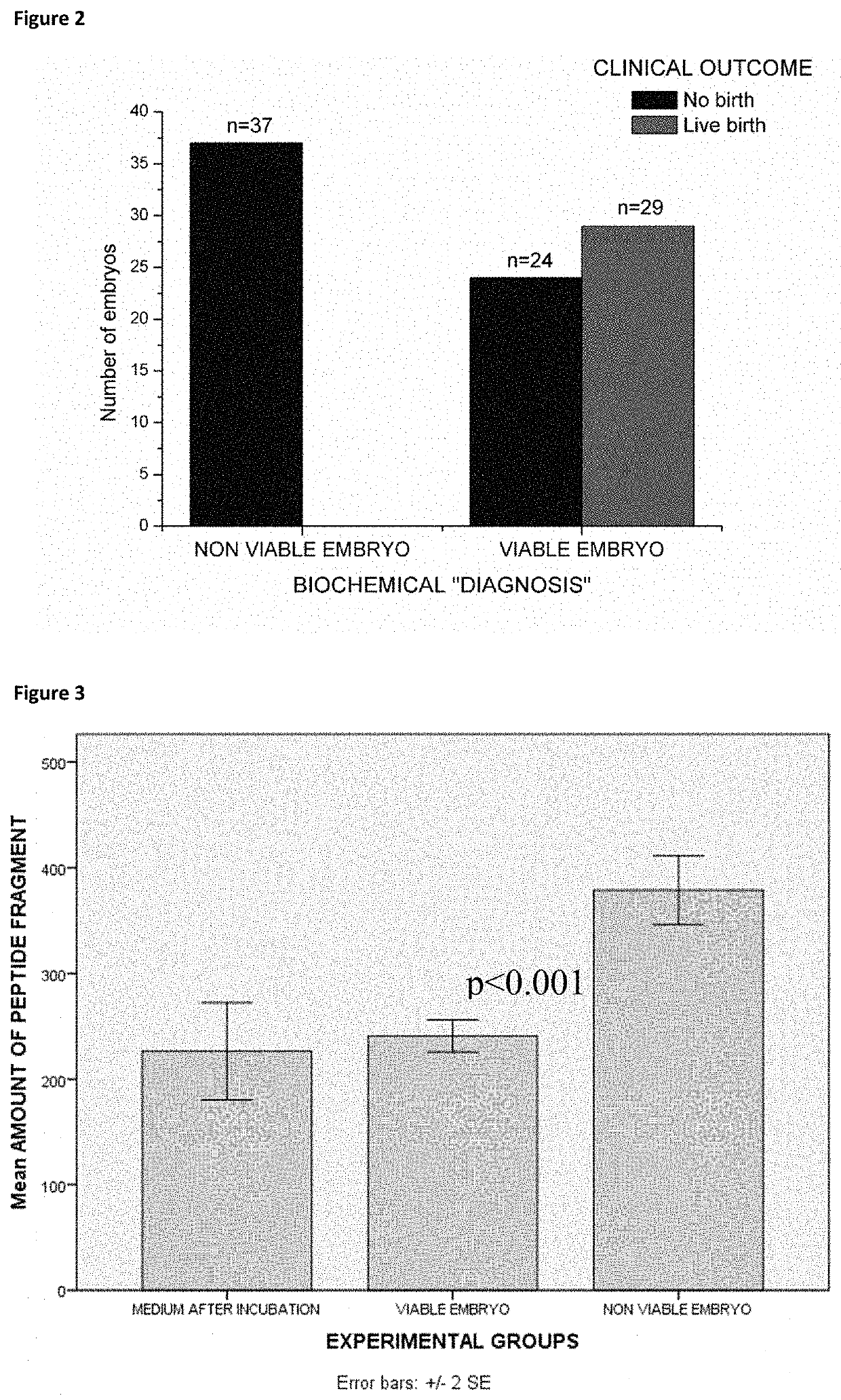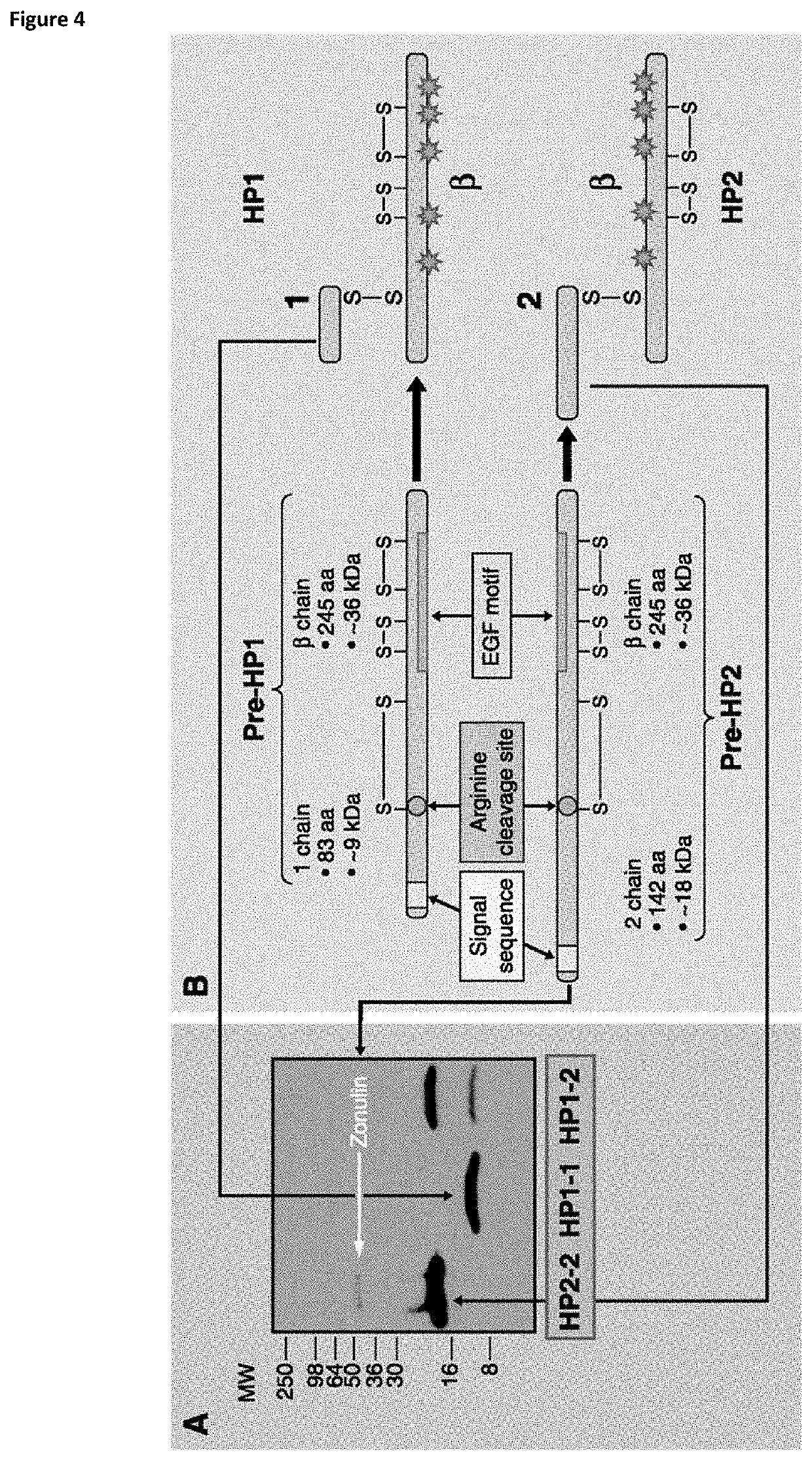Viability assessment of in vitro cultured human embryos from the culture medium
a technology of in vitro culture and human embryos, which is applied in the field of in vitro methods of can solve the problems of increasing the risk of preterm delivery, increasing the chance of multiple pregnancies, and far below expectations, and achieves accurate non-invasive embryo viability assessment
- Summary
- Abstract
- Description
- Claims
- Application Information
AI Technical Summary
Benefits of technology
Problems solved by technology
Method used
Image
Examples
example 1
ation of Proteins in the Culture Medium
[0148]Chromatographic conditions of the applied gradient are summarized in Table 1. Our primary aim was to find any qualitative or quantitative difference between incubation media of successful and unsuccessful embryos. This was done by measuring a smaller number of culture media samples of embryos transferred on day 3 (n=10) and embryos transferred on day 5 (n=10), all with known clinical outcome. Half of the samples were from successful and half from unsuccessful embryos. As control, empty incubated G-1™ v5 (3 day transfer) or G-2™ v5 (5 day transfer) containing 5 mg / ml HSA was used (n=4). The incubation of the control samples were done parallel with the embryos under the same circumstances and time interval. Qualitative differences were not found, however four different polypeptides were detected which all notable differed in quantity between the two embryo groups. These molecules were also present in the blank control samples however absent...
example 2
tion of the Viability of Embryos by Measuring the Human Haptoglobin Alpha-1 Fragment
[0151]The blinded analysis that was performed after the identification of the fragment was performed on a number of 80 samples of embryos transferred on the third day. The analysis was performed on a larger number of culture medium samples, composed of samples of embryos with unknown clinical outcome (n=80) and blank control samples (n=10). Only peaks corresponding to the two adduct ions of the IS ([M+H]+ and [M+Na]+) and to the [M+8H]8+ ion of the haptoglobin alpha-1 fragment were integrated. In this phase only samples of the embryos transferred on the third day and G-1™ v5 controls were measured since transfer on day three is more common and the same phenomenon was observed in both sample groups (day 3 and day 5 embryos, G-1™ v5 and G-2™ v5 controls). Further it is better to assess embryo viability in the possibly earliest stage of the pre-implantation development.
[0152]Data from this set of measur...
example 3
tion of the Viability of Embryos by Measuring the Reducing Potential of the Spent Embryo Culture Medium
[0155]The analytical standards of glutathione disulphide (GSSG), glutathione (GSH) and mercapto-succinic acid was purchased from Sigma-Aldrich Kft. (Budapest, Hungary). Mercapto succinic acid was not available as a disulphide; the solution of the reduced form was subjected to air oxidization (26), a disulphide forming spontaneous reaction of any compound containing thiol groups. The efficiency of this reaction was detected by direct electrospray ionization (ESI) mass spectrometry. The mercapto-succinic acid solution used in the experiments contained 84% mercapto succinic acid disulphide and 16% of the original reduced form.
[0156]To 25 μl of the previously described spent culture media of viable (n=10) and non-viable (n=10) embryos 5 μl of 8 μmol / μl solution of GSSG (40 μmol), or μl of 7.5 pmol / μl solution of pmol mercaptosuccinic acid (34.6 pmol disulphide and 2.9 pmol reduced form...
PUM
| Property | Measurement | Unit |
|---|---|---|
| threshold | aaaaa | aaaaa |
| threshold | aaaaa | aaaaa |
| threshold | aaaaa | aaaaa |
Abstract
Description
Claims
Application Information
 Login to View More
Login to View More - R&D
- Intellectual Property
- Life Sciences
- Materials
- Tech Scout
- Unparalleled Data Quality
- Higher Quality Content
- 60% Fewer Hallucinations
Browse by: Latest US Patents, China's latest patents, Technical Efficacy Thesaurus, Application Domain, Technology Topic, Popular Technical Reports.
© 2025 PatSnap. All rights reserved.Legal|Privacy policy|Modern Slavery Act Transparency Statement|Sitemap|About US| Contact US: help@patsnap.com



